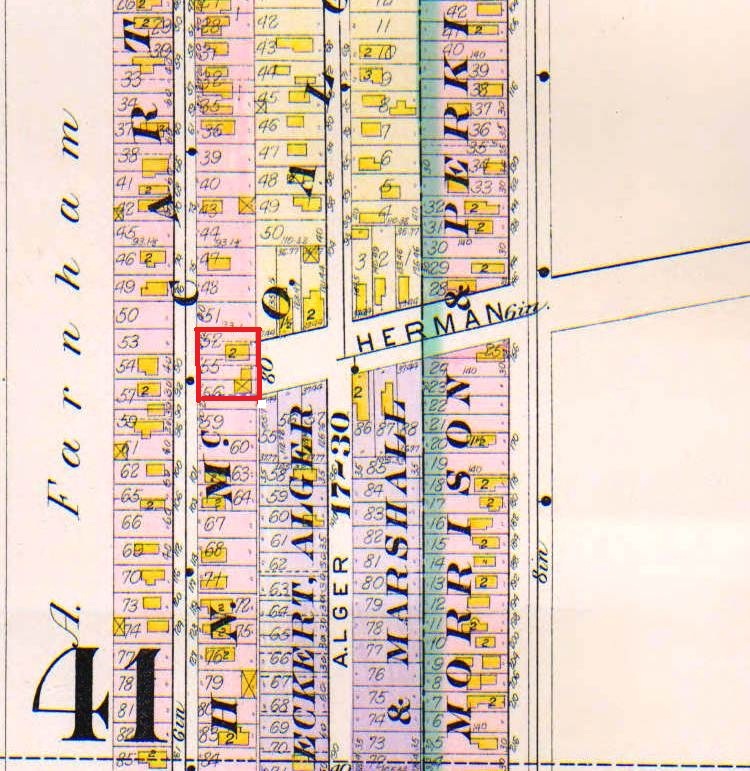West Cleveland Town Hall

Carved out of the Brooklyn Township territory, West Cleveland was incorporated as a village in 1871. The new suburb consisted of 1,500 acres of land and was bounded on the north by Lake Erie, on the east by the Cleveland corporation line near Gordon Avenue (West 65th Street), on the west by Highland Avenue (West 117th Street), and on the south by Lorain Street. The village was developed by landowners as a residential subdivision. It was hoped that the suburban setting would appeal to the housing wants and needs of Clevelanders living in an industrial area of the near west side known as the "Triangle". The plan was successful, and the area was predominately settled by working class immigrants.
A two-story, wood-framed structure at West 83rd Street and Detroit Avenue was built as the town hall for the Village of West Cleveland. The building housed the local jail and governmental offices, but also regularly acted as a site for voting and community meetings. With the expansion of the Village of West Cleveland to around 6,000 people in the 1890s, the local government proved inadequate in providing necessary services such as police protection and the grading of roads. In 1893, residents of West Cleveland voted to annex their suburb to the City of Cleveland. The following year, appointed commissioners from West Cleveland and Cleveland negotiated and agreed on provision for the terms of West Cleveland's annexation. As part of this agreement, the site of the town hall was to become a police station. Auctions were held for the purchase of the historic building. Initial plans to relocate the structure and have it act as a school were never realized. Instead, the building ended up in the hands of Irish immigrant and land developer James Faerron in 1894. The new owner moved the town hall to a lot of land off of McCart Street (West 69th Street) and used it as a residence. In 1912, the City of Cleveland purchased portions of Faerron's land to extend Herman Avenue. The building was once again moved, this time to its current location at 6802 Herman Avenue.
Images







